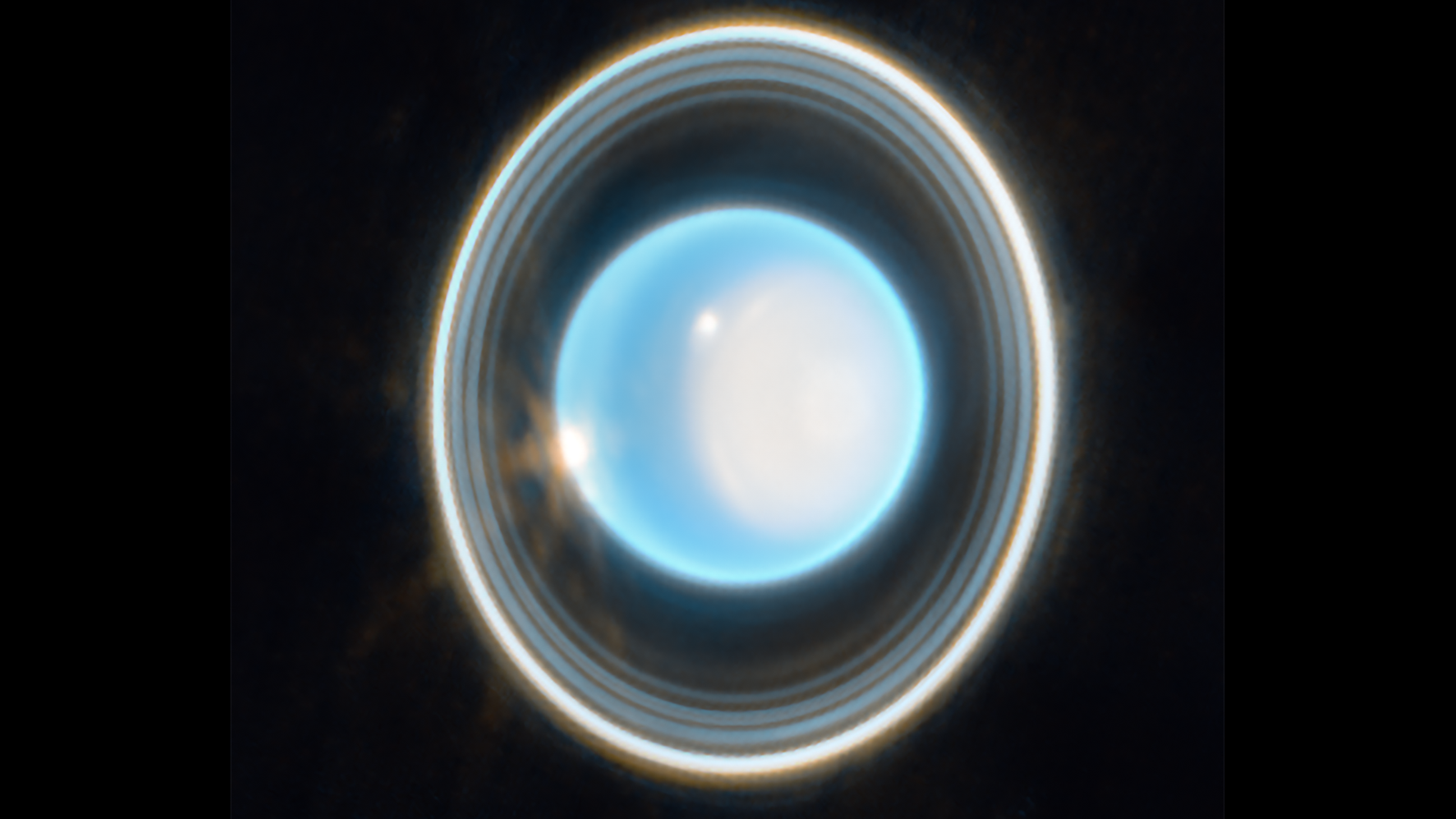NASA releases new images of Uranus which could unravel mystery about planet
The images taken using NASA’s James Webb Space Telescope are said to be the clearest yet of the ice giant – the seventh planet from the sun.
James Robinson
Sky News reporter @thejournojames
Friday 7 April 2023 12:28, UK
Listen to this article
0:00 / 1:56
1X
BeyondWords
Audio created using AI assistance
This zoomed-in image of Uranus, captured by Webb’s Near-Infrared Camera (NIRCam) Feb. 6, 2023, reveals stunning views of the planet’s rings. The planet displays a blue hue in this representative-color image, made by combining data from two filters (F140M, F300M) at 1.4 and 3.0 microns, which are shown here as blue and orange, respectively
Credits: NASA,
Image:
One of the images capturing Uranus that have been released by NASA
Why you can trust Sky News
NASA has released stunning new images of Uranus which could help unravel a mysterious feature of the planet.
The images, taken using NASA’s James Webb Space Telescope, show the planet’s rings in more detail than they have ever been seen before.
Though the rings have been captured in previous images, these are said to be much clearer.
This wider view of the Uranian system with Webb’s NIRCam instrument features the planet Uranus as well as six of its 27 known moons (most of which are too small and faint to be seen in this short exposure). A handful of background objects, including many galaxies, are also seen.
Credits: NASA
Image:
This wider view shows Uranus and its 27 known moons
The images, which also include a wider shot showing Uranus and its 27 known moons, could help to solve a mystery about the ice giant, according to NASA.
That is because they show Uranus’s polar cap, scientists say.
Commenting on the photograph, NASA said: “On the right side of the planet there’s an area of brightening at the pole facing the sun, known as a polar cap.
“This polar cap is unique to Uranus – it seems to appear when the pole enters direct sunlight in the summer and vanish in the fall.
“The Webb data will help scientists understand the currently mysterious mechanism.”
‘Unique’ planet
Uranus is unique because it rotates on its side at roughly a 90-degree angle from the plane of its orbit, NASA says.
This causes extreme seasons because the planet’s poles experience many years of constant sunlight followed by an equal number of years of complete darkness.
Uranus takes 84 years to orbit the sun.
Read more:
Scientists discover why Neptune and Uranus are different colours
Six ancient ‘universe breaker’ galaxies discovered
The new images of the planet come after NASA’s James Webb Space Telescope captured Neptune’s rings in infrared for the first time, allowing for seven of Neptune’s 14 moons to be seen.
The new telescope was launched in December 2021 and experts hope to be able to look back to the beginning of time when stars and galaxies were formed.
It is the world’s biggest and most powerful telescope and is floating about 930,000 miles above us.
Related Topics
James Webb Space Telescope
NASA
Space






























